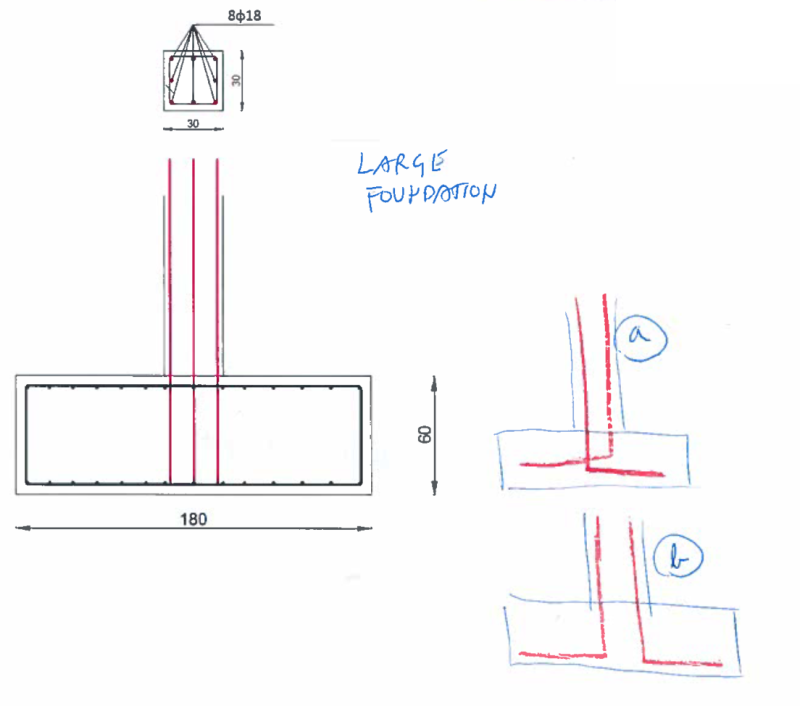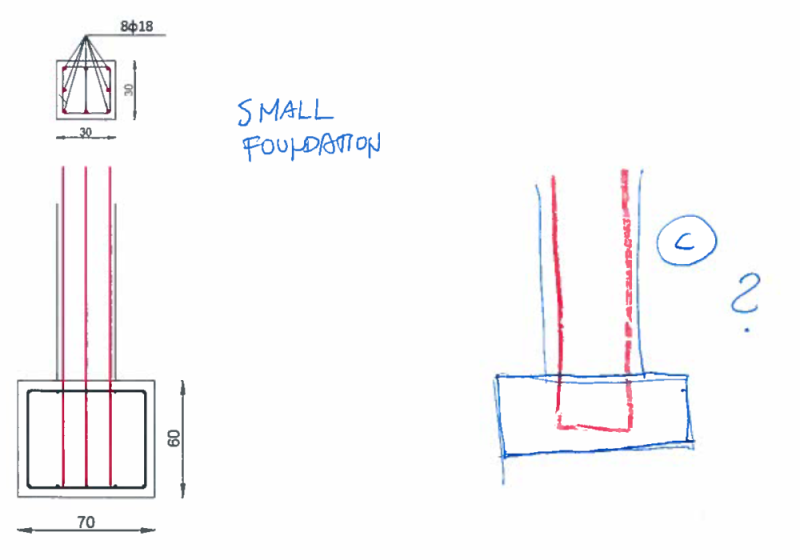Im more of a steel/wood guy, so I hope i ll get some feedback about this topic.
What is the proper way to anchor rebars in foundation? Im from EU so Im using Eurocodes.
In a case of large single foundation we can get bend (L shape - 90 degrees) rebars since there is enough space in foundation to do that.
But what about small foundations where there is no space for L shape rebars? I want to avoid welding anch. plates and stuff like that. Is it OK to make U shape rebars anchoring instead of L shape?
As I said thats not really my field. I have been studying Eurocodes regarding this but i have found out that effective anch. lenght that I can consider does not include horizontal part of L bend rebars but only vertical part... i dont get that... Why cant we consider that rebar is fully anchored as soon as we bend them so we have a hook or L or U shape rebars? Especially when it comes to foundation where there is a lot of concrete above bend part of rebar? Also if we cant consider horizontal part of L shape rebars (X in picture), what is the purpose to even bending them?



What is the proper way to anchor rebars in foundation? Im from EU so Im using Eurocodes.
In a case of large single foundation we can get bend (L shape - 90 degrees) rebars since there is enough space in foundation to do that.
But what about small foundations where there is no space for L shape rebars? I want to avoid welding anch. plates and stuff like that. Is it OK to make U shape rebars anchoring instead of L shape?
As I said thats not really my field. I have been studying Eurocodes regarding this but i have found out that effective anch. lenght that I can consider does not include horizontal part of L bend rebars but only vertical part... i dont get that... Why cant we consider that rebar is fully anchored as soon as we bend them so we have a hook or L or U shape rebars? Especially when it comes to foundation where there is a lot of concrete above bend part of rebar? Also if we cant consider horizontal part of L shape rebars (X in picture), what is the purpose to even bending them?



